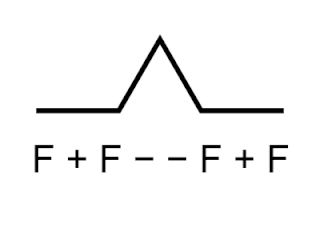Common Lisp (CL) is a dialect of the Lisp programming language, published in ANSI standard document ANSI INCITS 226-1994 (S20018). The Common Lisp HyperSpec, a hyperlinked HTML version, has been derived from the ANSI Common Lisp standard.

Lisp is a family of programming languages with a long history and a distinctive, fully parenthesized prefix notation. Originally specified in 1958, Lisp is the second-oldest high-level programming language still in common use. Only Fortran is older, by one year. Lisp has changed since its early days, and many dialects have existed over its history. Today, the best-known general-purpose Lisp dialects are Common Lisp, Scheme, Racket and Clojure.

Lisp machines are general-purpose computers designed to efficiently run Lisp as their main software and programming language, usually via hardware support. They are an example of a high-level language computer architecture, and in a sense, they were the first commercial single-user workstations. Despite being modest in number Lisp machines commercially pioneered many now-commonplace technologies, including effective garbage collection, laser printing, windowing systems, computer mice, high-resolution bit-mapped raster graphics, computer graphic rendering, and networking innovations such as Chaosnet. Several firms built and sold Lisp machines in the 1980s: Symbolics, Lisp Machines Incorporated, Texas Instruments, and Xerox. The operating systems were written in Lisp Machine Lisp, Interlisp (Xerox), and later partly in Common Lisp.

Logo is an educational programming language, designed in 1967 by Wally Feurzeig, Seymour Papert, and Cynthia Solomon. Logo is not an acronym: the name was coined by Feurzeig while he was at Bolt, Beranek and Newman, and derives from the Greek logos, meaning word or thought.

Scheme is a dialect of the Lisp family of programming languages. Scheme was created during the 1970s at the MIT AI Lab and released by its developers, Guy L. Steele and Gerald Jay Sussman, via a series of memos now known as the Lambda Papers. It was the first dialect of Lisp to choose lexical scope and the first to require implementations to perform tail-call optimization, giving stronger support for functional programming and associated techniques such as recursive algorithms. It was also one of the first programming languages to support first-class continuations. It had a significant influence on the effort that led to the development of Common Lisp.
In computing, serialization is the process of translating a data structure or object state into a format that can be stored or transmitted and reconstructed later. When the resulting series of bits is reread according to the serialization format, it can be used to create a semantically identical clone of the original object. For many complex objects, such as those that make extensive use of references, this process is not straightforward. Serialization of object-oriented objects does not include any of their associated methods with which they were previously linked.
Maclisp is a programming language, a dialect of the language Lisp. It originated at the Massachusetts Institute of Technology's (MIT) Project MAC in the late 1960s and was based on Lisp 1.5. Richard Greenblatt was the main developer of the original codebase for the PDP-6; Jon L. White was responsible for its later maintenance and development. The name Maclisp began being used in the early 1970s to distinguish it from other forks of PDP-6 Lisp, notably BBN Lisp.
AutoLISP is a dialect of the programming language Lisp built specifically for use with the full version of AutoCAD and its derivatives, which include AutoCAD Map 3D, AutoCAD Architecture and AutoCAD Mechanical. Neither the application programming interface (API) nor the interpreter to execute AutoLISP code are included in the AutoCAD LT product line. A subset of AutoLISP functions is included in the browser-based AutoCAD web app.

Genera is a commercial operating system and integrated development environment for Lisp machines created by Symbolics. It is essentially a fork of an earlier operating system originating on the Massachusetts Institute of Technology (MIT) AI Lab's Lisp machines which Symbolics had used in common with Lisp Machines, Inc. (LMI), and Texas Instruments (TI). Genera was also sold by Symbolics as Open Genera, which runs Genera on computers based on a Digital Equipment Corporation (DEC) Alpha processor using Tru64 UNIX. In 2021 a new version was released as Portable Genera which runs on DEC Alpha Tru64 UNIX, x86_64 and Arm64 Linux, x86_64 and Apple M1 macOS. It is released and licensed as proprietary software.
In programming languages, a closure, also lexical closure or function closure, is a technique for implementing lexically scoped name binding in a language with first-class functions. Operationally, a closure is a record storing a function together with an environment. The environment is a mapping associating each free variable of the function with the value or reference to which the name was bound when the closure was created. Unlike a plain function, a closure allows the function to access those captured variables through the closure's copies of their values or references, even when the function is invoked outside their scope.

The Common Lisp Object System (CLOS) is the facility for object-oriented programming which is part of ANSI Common Lisp. CLOS is a powerful dynamic object system which differs radically from the OOP facilities found in more static languages such as C++ or Java. CLOS was inspired by earlier Lisp object systems such as MIT Flavors and CommonLoops, although it is more general than either. Originally proposed as an add-on, CLOS was adopted as part of the ANSI standard for Common Lisp and has been adapted into other Lisp dialects such as EuLisp or Emacs Lisp.
Flavors, an early object-oriented extension to Lisp developed by Howard Cannon at the MIT Artificial Intelligence Laboratory for the Lisp machine and its programming language Lisp Machine Lisp, was the first programming language to include mixins. Symbolics used it for its Lisp machines, and eventually developed it into New Flavors; both the original and new Flavors were message passing OO models. It was hugely influential in the development of the Common Lisp Object System (CLOS).

GNU Ubiquitous Intelligent Language for Extensions is the preferred extension language system for the GNU Project and features an implementation of the programming language Scheme. Its first version was released in 1993. In addition to large parts of Scheme standards, Guile Scheme includes modularized extensions for many different programming tasks.

Racket is a general-purpose, multi-paradigm programming language and a multi-platform distribution that includes the Racket language, compiler, large standard library, IDE, development tools, and a set of additional languages including Typed Racket, Swindle, FrTime, Lazy Racket, R5RS & R6RS Scheme, Scribble, Datalog, Racklog, Algol 60 and several teaching languages.

EuLisp is a statically and dynamically scoped Lisp dialect developed by a loose formation of industrial and academic Lisp users and developers from around Europe. The standardizers intended to create a new Lisp "less encumbered by the past", and not so minimalist as Scheme. Another objective was to integrate the object-oriented programming paradigm well. It is a third-generation programming language.
Allegro Common Lisp is a programming language with an integrated development environment (IDE), developed by Franz Inc. It is a dialect of the language Lisp, a commercial software implementation of the language Common Lisp. Allegro CL provides the full American National Standards Institute (ANSI) Common Lisp standard with many extensions, including threads, CLOS streams, CLOS MOP, Unicode, SSL streams, implementations of various Internet protocols, OpenGL interface. The first version of Allegro Common Lisp was finished at the end of 1986, originally called Extended Common Lisp. Allegro CL is available for many operating systems including Microsoft Windows (32/64-bit), and many Unix and Unix-like, 32-bit or 64-bit, including macOS, Linux (32/64-bit), FreeBSD (32-bit), Solaris, UNICOS, and UTS. Internationalization and localization support is based on Unicode. It supports various external text encodings and provides string and character types based on Universal Coded Character Set 2 (UCS-2). Allegro CL can be used with and without its integrated development environment (IDE), which is available for Windows, Linux, and on macOS in version 8.2. The IDE includes development tools including an editor and an interface designer. Allegro CL can be used to deliver applications.
ANIMAL is an interactive environment for image processing that is oriented toward the rapid prototyping, testing, and modification of algorithms. To create ANIMAL, XLISP of David Betz was extended with some new types: sockets, arrays, images, masks, and drawables.








